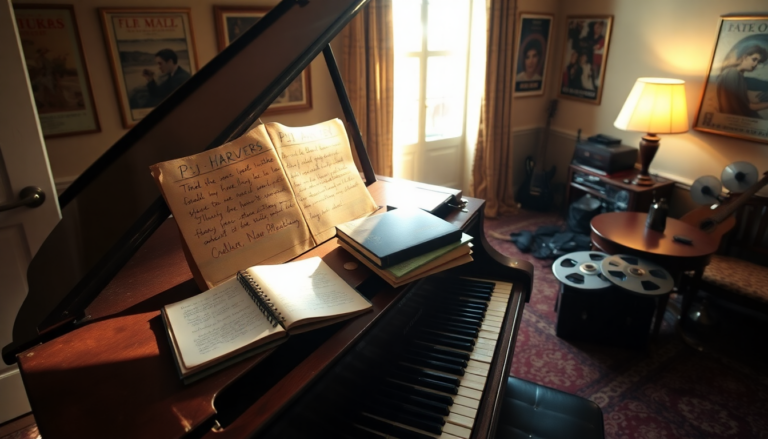Argomenti trattati
PJ Harvey is truly a standout figure in the realm of alternative music. But what sets her apart isn’t just her unique sound—it’s her remarkable evolution as an artist. From the vibrant creativity of her early years, where she composed songs in hotel rooms and tour buses, to her profound exploration of themes through poetry and collaborations, Harvey has consistently redefined what it means to be an artist. This journey reflects a deeper understanding of the world around her and a steadfast commitment to authenticity in her work.
Unleashing Creativity in the Early Days
Back in the 1990s and early 2000s, PJ Harvey made a name for herself with her raw musical talent, often writing songs wherever inspiration struck—whether in bustling cafes or on the road. Her creative process was wonderfully spontaneous; as she shared in discussions with fellow artists, her lyrics often sprang from the rhythmic sounds she coaxed from her guitar. This unfiltered creativity led to iconic tracks like ‘Sheela Na Gig,’ where initial sounds gradually blossomed into complete songs. It was a time of exploration and instinct, perfectly capturing the vibrant energy of the alternative music scene.
However, everything changed when she crafted her acclaimed album ‘Let England Shake.’ With a newfound purpose and collaborative spirit, Harvey began to infuse extensive research into her creative process. This album marked a significant departure from her earlier works, showcasing a more structured and thoughtful approach to songwriting. It beautifully illustrated her ability to weave historical narratives into her music, culminating in a poignant exploration of British conflicts through her evocative lyrics. This meticulous crafting of songs not only earned her a second Mercury Prize but also solidified her status as an innovative artist.
The Shift Towards Storytelling
As Harvey’s career blossomed, her focus shifted from music to the compelling power of words. In a revealing interview, she stated, “I have found over the years that I’m not—I don’t think I’m really a musician. I’m much more interested in the words.” This statement captures her transition towards a more literary approach, where narrative became as vital as melody. This evolution was further highlighted in her collaboration with war photographer Seamus Murphy, resulting in the poetry book ‘The Hollow of the Hand’ and the album ‘The Hope Six Demolition Project.’
Through these projects, Harvey aimed not only to document experiences but to immerse herself in the realities of her subjects. Her travels to conflict zones and urban landscapes enabled her to capture the essence of human stories, anchoring her artistic output in the lived experiences of others. This commitment to storytelling has added a profound layer of depth to her work, showcasing her as an artist who transcends traditional boundaries by intertwining music, poetry, and visual art.
The Ongoing Evolution of an Artist
PJ Harvey’s journey is a powerful testament to the idea that true artistry knows no bounds; it evolves. Her commitment to growth, experimentation, and authenticity resonates with many who have followed her career. While she may not fit the conventional mold of a musician, her work continues to be impactful and thought-provoking. Harvey’s refusal to repeat herself and her relentless drive to innovate challenge the norms of the music industry, establishing her as a beacon for aspiring artists.
As fans and critics reflect on her legacy, the conversation often revolves around her remarkable ability to adapt and redefine what it means to be an artist in today’s world. Her journey illustrates that art is not merely about production; it’s about exploring ideas, emotions, and the human experience. Whether through her haunting melodies or evocative poetry, PJ Harvey remains an essential force in contemporary music and literature. Isn’t it fascinating how one artist can encompass so many dimensions of creativity?

